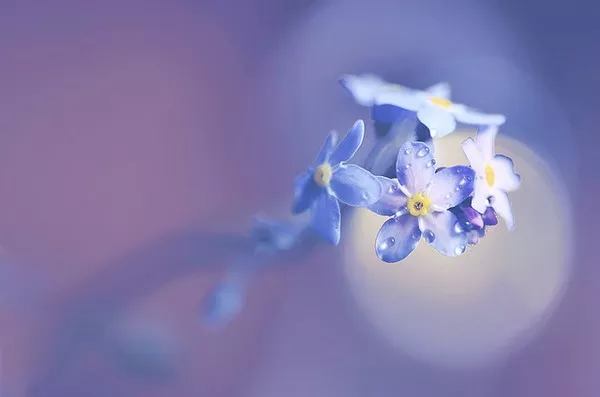Flowers have an ephemeral beauty that captivates us, and their presence in our lives often holds special meaning. Whether it’s a bouquet from a loved one, a memento from a special occasion, or even flowers from your own garden, preserving these delicate blooms can be a cherished way to immortalize their beauty. In this article, we will explore various techniques and tips for preserving flowers forever, enabling you to relish their splendor long after they have faded in the vase.
Drying Flowers
Drying flowers is one of the most popular and accessible methods for preserving their beauty. There are several techniques to choose from:
a. Air Drying:
- Choose flowers that are at their peak, as they will retain their shape and color better.
- Remove excess leaves and trim the stems.
- Bundle a few flowers together with a rubber band and hang them upside down in a dry, dark, well-ventilated place for several weeks.
- Keep an eye on the flowers as they dry, ensuring they remain intact and don’t rot.
b. Pressing Flowers:
- Place flowers between sheets of parchment paper within the pages of a heavy book.
- Add weight on top of the book to press the flowers flat.
- Leave the flowers undisturbed for a few weeks until they are completely dried.
c. Silica Gel:
- Silica gel is a desiccant that helps maintain the shape and color of flowers.
- Fill an airtight container with silica gel and bury the flowers inside.
- Gently shake the container to ensure the gel penetrates the flowers.
- Seal the container and leave it for about a week.
Freeze Drying
Freeze drying is a more advanced method for preserving flowers, which involves freezing them and then slowly removing moisture under a vacuum. This technique retains the flowers’ color, shape, and fragrance better than air drying. However, it requires special equipment and is often done by professionals.
Flower Pressing
Flower pressing is a creative way to preserve flowers and create stunning art. Pressed flowers can be used in various crafts, such as greeting cards, bookmarks, and framed arrangements. To press flowers effectively, you’ll need a flower press or a homemade press using heavy books, as mentioned earlier.
Wax Preservation
Wax preservation is a traditional method for preserving flowers that provides a unique, glossy finish. Here’s how to do it:
- a. Choose flowers with sturdy petals, such as roses, daisies, or tulips.
- b. Melt paraffin wax in a double boiler, ensuring it doesn’t get too hot.
- c. Dip the flowers into the melted wax, one at a time, ensuring they are fully coated.
- d. Let the excess wax drip off, and then place the flowers on parchment paper to cool and harden.
- e. Repeat the dipping process until you achieve the desired thickness of wax.
- f. Once the wax is completely dry, you can arrange the preserved flowers in a vase or create decorative arrangements.
Epoxy Resin
Epoxy resin is a modern and visually striking way to preserve flowers. It encases the flowers in a clear, glass-like finish, creating a lasting piece of art. Here’s how to use epoxy resin for flower preservation:
- a. Choose a silicone mold that fits your flowers and coat it with a mold release agent to prevent sticking.
- b. Mix the epoxy resin according to the manufacturer’s instructions.
- c. Pour a small amount of resin into the mold and place your flowers face down.
- d. Gently press the flowers into the resin, ensuring they are evenly spaced and covered.
- e. Add more resin to fill the mold, making sure the flowers are completely submerged.
- f. Remove any air bubbles with a heat gun or by gently tapping the mold.
- g. Allow the resin to cure according to the instructions. This may take a day or longer.
- h. Once the resin is fully cured, remove the preserved flower piece from the mold, and it’s ready to display.
Glass Pressing
For a more sophisticated way to preserve flowers, consider glass pressing. This method involves using a hydraulic press to sandwich flowers between glass plates. The result is a delicate and translucent floral masterpiece. Glass-pressed flowers can be used in various applications, from framed art to jewelry.
Digital Preservation
In the age of technology, digital preservation of flowers is gaining popularity. It involves scanning or photographing flowers at their freshest and most vibrant, then printing and framing the images to create a lasting memory. Additionally, there are companies that offer services to create custom 3D-printed flower sculptures from your photographs, giving you a unique and artistic way to preserve flowers.
Tips for Successful Flower Preservation
Start with Fresh Flowers: The quality of the preserved flowers depends on their condition when you begin the preservation process. Select flowers at their peak freshness, ideally just before they fully bloom.
Remove Excess Moisture: Moisture can lead to mold and decay during the preservation process. Make sure to remove any excess moisture from the flowers before preserving them.
Handle Gently: Flowers are delicate, and their petals can easily bruise or break. Handle them with care to preserve their beauty.
Use airtight containers: When using desiccants like silica gel, seal flowers in airtight containers to ensure the best results.
Display with Care: Once your flowers are preserved, display them away from direct sunlight and high humidity to prevent fading and deterioration.
Conclusion
Preserving flowers forever allows us to capture and celebrate the natural beauty of blooms long after they have graced our lives. Whether you choose traditional methods like drying and pressing, or more contemporary approaches such as epoxy resin and digital preservation, the key is to approach the process with care, attention, and a touch of creativity. By following the techniques and tips outlined in this article, you can create lasting memories and beautiful keepsakes from the fleeting beauty of flowers.


